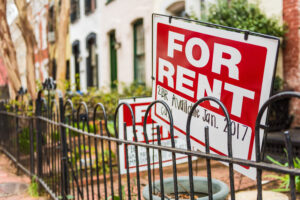If you live in a dry climate, or somewhere prone to wild fires during Summer, then you know all too well about fire season. While adding fire safety to your rental’s to-do list will add a little extra work, in the end it can protect your tenants, assets and community. Wildfires are no joke; we’ve all heard of families losing everything from fires, flames jumping over freeways and people narrowly escaping burning structures. However, most of the time we don’t realize how significant fire safety is until the air feels thick, the sky is burnt orange, and the flames are right outside our doors. It’s a confusing and terrifying experience that can be avoided by adding a little extra preparation to your regular property upkeep.
According to the Washington State Department of Natural Resources, “as many as 80% of homes lost to wildland fire may have been saved if brush around the homes were cleared and defensible space created around structures.” While homes in wildlife areas are primary targets for wildfires, you should still be aware if your rental property has a good amount of defensible space. Cal Fire categorizes this defensible space into 2 zones and recommends the following:
Zone 1
30 ft. away from your rental home
- Remove all dead plants, grass, and weeds and clear your yard, roof, and gutters from any dry leaves and pine needles.
- Trim your trees so that a minimum of 10 feet is between the other trees and your property’s chimney.
- Remove (or relocate to Zone 2) any flammable plants, wood piles, or patio furniture that could catch fire.
Zone 2
100 ft. away from your rental home
- Cut or mow grass down to a maximum height of 4 inches.
- Remove fallen leaves, needles, twigs, bark, cones, and small branches.
While the standard defensible space for zone 1 and 2 is 30 ft. and 100 ft., check with your local fire department. San Diego County, for example, requires a 50 ft. clearance in zone 1.
Vertical and Horizontal Space in your Landscaping
In addition to clearing dead and dry plants, while you’re adding to your property’s landscape you should be aware of plant and tree spacing. According to CAL FIRE TV, wildfires generally start from the ground up, using plants as a ladder to go from the grass, to the brush, to the trees, and once it’s in the trees it’s extremely difficult to combat. On a level plane, generally you’ll want at least two times as much space between shrubs and 10 ft. between trees. Depending on the slope of your landscape, the amount of space between plants might double. Because fires travel upward, you should also be aware of vertical clearance. Trim your tree branches so that there is 6 ft. of space from the ground. If you have shrubs near your trees, multiply that space by 3. As an extra step, you can also start incorporating fire resistant plants into your landscaping plan. Some common fire resistant plants are Sage, French lavender, and Wild Strawberry.
Don’t let fire season creep up on you. Start making your rental property fire safe before it’s too late. The sooner you start clearing your property of dead foliage and adding fire resistant plants to the mix, the lighter the work load down the road. Even Wisconsin governor, Scott Walker, has already declared a state of emergency going into fire season and it’s only May.
For more details about defensible space (including a visual) view this handout.
Does your rental property’s area have any special fire safety regulations? How soon do you start prepping for fire season? Do you get your tenants involved? Let us know what you do in the comments section below and be sure to subscribe!







